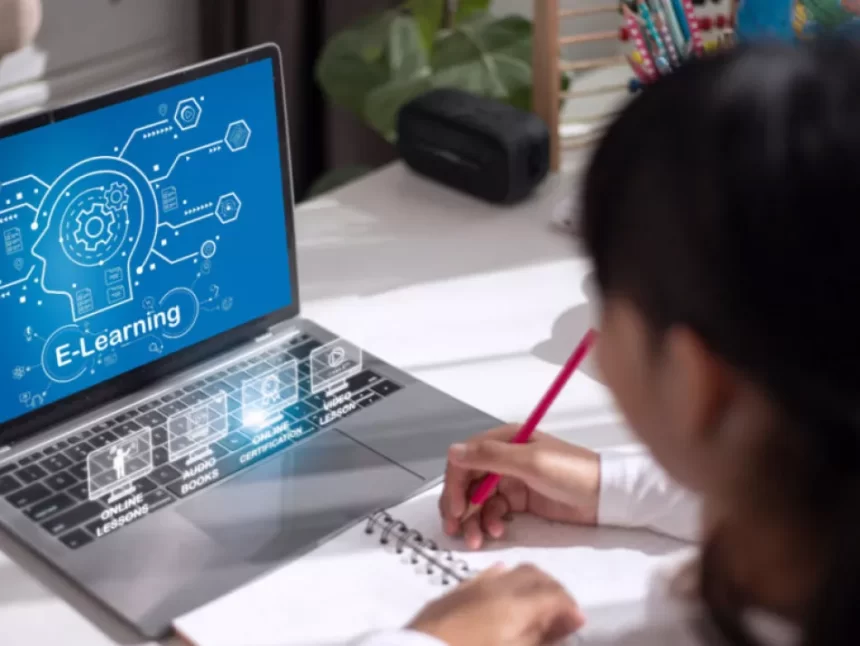With OpenAI said to be exploring ChatGPT’s potential in classrooms despite concerns it promotes cheating, the debate about whether generative AI tools in schools are a help or a hindrance continues to rage in Australian schools.
Earlier this year, YouthInsight, the research arm of Student Edge, released a report that found an overwhelming number of Gen Z students believe it is important for young people to develop the skills to use generative AI. The findings showed that 71 per cent of students who had used Generative AI before had not used it to plagiarise, and 83 per cent said that they would not use it to plagiarise in the future.
YouthInsight’s recent Top 100 Youth Brands Report also found that ChatGPT landed at number six in the Technology Brand Category and 48 in Australia’s Top 100 Youth Brands for 2023, signalling that the AI tool is a favourite among school-aged Aussies.
Ways to use AI in classrooms
Dr Anna Denejkina is the Research Director for YouthInsight and has firm thoughts about how AI can and should be used in Australian classrooms in the 2024 school year.
“With the integration of Generative AI in Australian classrooms through the recently released Australian Framework for Generative Artificial Intelligence in Schools, I anticipate that there may be a review of assessments to better allow students to use Gen AI in their work,” she told EducationDaily. “In addition, students are already using Gen AI for upskilling and self-learning, so I anticipate this will also see an uplift, alongside more creative content generation.”
She is also hopeful that, with this integration both in the school and tertiary sectors, education providers will not only focus on upskilling students in using Generative AI but will be “mindful and clear about the biases of Gen AI tools – and these are ethical and practical issues because if we’re engaging with models that replicate biases of their training data, we need to understand and address the problems in requiring students to use or rely on these tools”.
“And this should be an education piece not just for students but for all of us – how do we work with Gen AI when it has these inherent issues?”

Helping families understand AI benefits
How families and teachers can work to support young students through their use of AI is another important consideration.
“In the first instance, there is a responsibility to support and educate students on these tools and their correct use (transparency of use, prompting pathways, validating information accuracy, and being cognisant of biases), and to do this, we need to develop our own skills in this area, and be transparent and honest about our use of Gen AI in all instances,” Dr Denejkina says. “But in addition, we also need to be transparent with students about Gen AI biases, information accuracy issues (or hallucinations), ethics, and even how these models are developed. This is a big ask from educators when they already have enormous workloads – so the sector needs to outline how it is supporting educators in this space.”
The shift away from AI plagiarism claims
With the findings of the YouthInsight report revealing young people say they are not using AI to plagiarise or cheat, Dr Denejkina says the research undertaken in April and November this year shows that young people are primarily using Generative AI to experiment with the tool, to support their study, as a general information search (like you would use Google), and for self-learning and skills development.
“The start of this year hyper-focused on Gen AI being a risk to education specifically in the plagiarism or cheating area – this has really skewed perceptions of the possibilities of Gen AI,” she told EducationDaily. “Our research has shown that Gen AI is not increasing the rates of plagiarism, and it is unfair to view students in this negative light when we already know that workplaces are using this technology to increase efficiencies.”
Over the past few months, though, Dr Denejkina believes we have gone some way in changing focus from plagiarism and cheating to the benefits of Generative AI, including efficiency, creativity, and accessibility these tools offer.
“I don’t believe there is a one-size fits all scenario of a global and cross-generational education on Gen AI, so it comes down to thought leadership and targeted messaging from sector leaders to provide this information to the public – and here it is important that there is also clarity around the inherent issues of Gen AI.”
Prevention is key
On the topic of plagiarism, numerous reports have shown that academic misconduct has increased in Australia over the past few years. But with Generative AI not increasing rates of plagiarism (but being used as another tool to plagiarise by a minority of students), Dr Denejkina says the question then becomes not ‘how do we catch students cheating?’, but ‘how do we prevent it?’.
“We must consider what has happened culturally to drive up the number of students engaging in academic misconduct, and what is it about our institutions and modern lived experience that is driving students into these practices. We need to move away from a deficit model that focuses on punishment, and instead work out how we can better support students during their studies so as to alleviate feelings that cheating and plagiarism are the only way they will pass,” she says.
Keen to use AI to boost your academic potential? Try these tips:
- Experimenting with the tools will always lead to better use and understanding. There are also free online courses from brands including Google, Microsoft, LinkedIn, and many others.
- In addition to developing these skills, it’s again important to understand that there are issues of bias within these models and problems around information accuracy.
- We must remember that not everyone has the resources to be able to teach these skills to themselves (or have access to often paywalled research outlining the problems with Gen AI), so as Gen AI is being integrated into education sectors, it is vital that students are not only exposed to Gen AI skill building through their education, but to the background information about how these models have been developed and the biased content they can generate.
Deeper AI-driven insights help teachers refine lessons
To further explore AI’s potential role in education for 2024, EducationDaily also reached out to Donald La, the founder of Quacked AI, a company that advocates for building AI competency by urging teachers to incorporate AI into their curriculums.
“The impact of AI extends to teachers as well. By gaining a deeper understanding of their students through AI insights, educators can refine their teaching methods. Automation of repetitive tasks further empowers teachers to focus on what matters most – fostering a supportive and enriching learning environment.” says Mr La, who says it’s crucial that teachers begin boosting their AI competency.

“Gaining a deep understanding of AI tools and how to apply them in an educational environment can enhance classroom experiences, personalise learning, and streamline their own workflows, allowing educators to focus on what matters most – fostering student growth. There’s currently a big gap in improving pedagogy within Australian schools; utilising AI tools grants teachers the opportunity to further personalise learning and even detect signs of students struggling earlier to allow for intervention before it becomes too late. Investing in teacher AI competency not only benefits their students’ academic performance and workforce readiness, but also benefits themselves in getting repetitive tasks (e.g. marking, report writing, lesson planning) done faster and easier,” he told EducationDaily.
With ChatGPT very much seen as the ‘new kid on the block’ in the tech world for users of all ages, Mr La says he is “not surprised it’s ranked so highly in the YouthInsight’s Top 100 Report because of the value ChatGPT provides” but says beating out TikTok was “an unexpected feat (I thought TikTok would have ranked 1st to be honest!)”.
Issues around AI competency must be addressed
“YouthInsight’s Generative AI report highlighted a concerning gap in AI competency among students, with 43 per cent expressing low confidence and skill levels. To bridge this gap, I believe the key lies in hands-on experience and integration into daily learning,” Dr Denejkina says.
“One effective approach is encouraging students to dive into the deep end and experiment with a variety of AI tools. The rapidly advancing landscape of AI presents an opportunity for students to stay engaged by applying these tools to their hobbies and interests. Learning becomes more dynamic and captivating when it aligns with personal passions.”
Mr La says there’s “currently a big gap in improving pedagogy within Australian schools; utilising AI tools grants teachers the opportunity to further personalise learning and even detect signs of students struggling earlier to allow for intervention before it becomes too late”.
At Quacked AI, he says their aim is to advocate for building AI competency by urging teachers to incorporate AI into their curriculums. This can be achieved through ‘AI-enabled’ assessments or homework, where students are empowered to use AI tools to complete tasks.
“This not only allows for experimentation but also establishes a clear framework for the responsible use of AI, emphasizing academic integrity,” he says.
“Investing in teacher AI competency not only benefits their students’ academic performance and workforce readiness, but also benefits themselves in getting repetitive tasks (e.g. marking, report writing, lesson planning) done faster and easier.”
ChatGPT can support disadvantaged students
With AI in education serving as a valuable resource – especially for disadvantaged children who may face challenges in accessing additional support outside regular school hours – Mr La says Generative AI extends a helping hand by providing supplementary assistance tailored to individual needs, and breaking down barriers that may arise from various circumstances.
“Moreover, the impact of AI extends to teachers as well. By gaining a deeper understanding of their students through AI insights, educators can refine their teaching methods. Automation of repetitive tasks further empowers teachers to focus on what matters most – fostering a supportive and enriching learning environment.”
He calls on schools and governments to actively invest in educational programs and courses to boost teacher AI proficiency whilst providing more opportunities for students to apply AI in safe and practical cases.
“The best way to improve competency is through ongoing experimentation and experience with AI tools. Teachers should also consider how to create appropriate AI use cases and guidelines within their curriculum,” Mr La told EducationDaily. “It aligns with our exact mission at Quacked AI: to build AI competency and support students and teachers around the world!”









